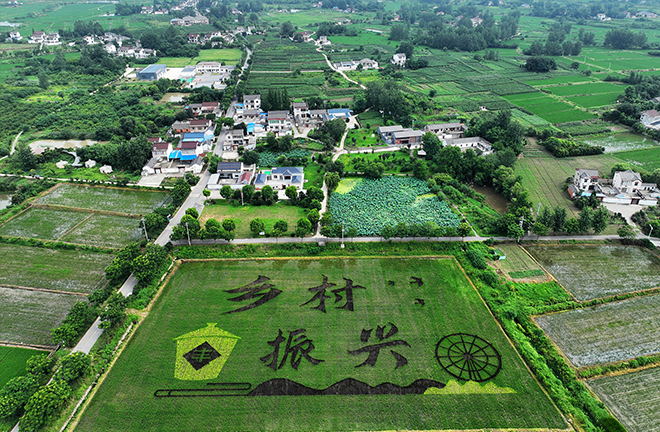Rural revitalization for a Beautiful China

The countryside of Yangzhou, Jiangsu Province, July 19 Photo: CFP
China’s reform and opening up were initially rooted in agricultural sectors and rural areas. In the new era, the modernization of agriculture and rural areas has become a crucial element and essential prerequisite for building a great modern socialist country in all respects. It also serves as the cornerstone for achieving common prosperity for all. With significant progress made in addressing the issues relating to agriculture, rural areas and rural people (“three rural” development), the past five years have marked a significant milestone in this regard.
Absolute poverty eradicated
Under the current standards, China has effectively eradicated absolute poverty. In 1982, the central government initiated the “three west” agricultural construction projects in Dingxi and Hexi in Gansu Province, as well as Xihaigu region in Ningxia Hui Autonomous Region. This marked the beginning of organized and planned poverty alleviation efforts through rural development. By the end of 2020, China successfully achieved a complete victory in its fight against poverty as scheduled. From 2021 onwards, China has been steadfast in consolidating and expanding the gains made in poverty alleviation, ensuring no large-scale relapse into poverty. In 2022, the per capita net income of the poverty-alleviated population in China reached 14,342 yuan, a year-on-year increase of 14.3%, and the per capita disposable income of farmers reached 20,133 yuan, with a growth rate of 6.3%. The per capita net income growth rate of the poverty-alleviated population far exceeds that of farmers, which also indicates that the foundation for eliminating absolute poverty is very solid.
Urban-rural integration fostered
The relationship between urban and rural areas has transformed from a binary opposition structure to urban-rural integration. In the past five years, the growth rate of rural residents’ per capita net income has been continuously higher than that of urban residents’ disposable income. The ratio of urban and rural residents’ per capita disposable income has dropped from 2.69 in 2018 to 2.45 in 2022. Significant improvements have been made in rural infrastructure, leading to historic resolutions of long-standing issues such as safe housing and access to clean drinking water for rural residents. The development of rural infrastructure has laid the foundation for promoting the integration of the primary, secondary, and tertiary industries in rural areas, and rural construction has entered a new stage. From the construction of a new countryside, to a beautiful countryside and then to a beautiful and harmonious countryside, many countrysides have achieved a transformation from beautiful countrysides to beautiful economies. New forms of business such as leisure tourism, research and education, and business conferences have begun to shift from cities to rural areas, and development factors such as talent, funds, and management experience have begun to flow in a reverse direction from cities to rural areas. Overall, there is a discernible shift from urban-rural segmentation towards a gradual process of integration.
Food security safeguarded
Nationally, the level of food security has been effectively consolidated. At present, the international situation is complex and volatile. Influenced by multiple factors, global food prices continue to rise, and global food supply chain security is seriously challenged. Ensuring food security has become an important cornerstone of current domestic socioeconomic stability and development. On one hand, efforts are made to enhance the quality of arable land through the establishment of high-standard farmland, with a focus on prioritizing the cultivation of grain crops on permanent basic farmland. On the other hand, strategies such as innovation in the seed industry are implemented to drive agricultural advancements through scientific research and education, thereby elevating the level of agricultural modernization.
Going forward, China’s efforts will extend beyond ensuring national food security, stabilizing food production, and implementing policies to strengthen agriculture and benefit farmers. The focus will also shift towards upgrading rural infrastructure and promoting the development of livable, productive, and beautiful rural areas, with the aim of accelerating the modernization of agricultural sectors and rural areas, and ultimately painting a new picture of rural revitalization.
Tang Lixia is a professor and deputy dean of College of International Development and Global Agriculture at China Agricultural University.
Edited by ZHAO YUAN
